Archive
Sinclair ZX80 Original Power Supply
Commodore CBM 8250 & CBM 8296 Motherboards for Spare Parts
I thank my dear friend for the donation of the motherboards.
- Commodore Dual Drive Floppy Disk CBM 8250
- Commodore CBM 8296
MCUmall GQ-4X Universal USB Programmer + Adapters
Adapters that you see in the photo:
- GQ-4X GQ-3X | WILLEM 3in1 PLCC32 to DIP32.
- GQ-4X GQ-3X | JTAG & SPI in circuit programming adapter | ICSP/ISP MODE ADP-056
- GQ-4X GQ-3X | WILLEM ADAPTER MCS-51 / AVR + PLCC44
My personal considerations:
This is a great programmer and certainly more stable of the classic Willem (parallel or usb). I have tried to program some EPROM and FLASH without problems. The power supply via USB is very stable and accurate.
from the homepage of MCUmall:
The GQ-4X is the newest model of True USB Willem Universal Programmer series from MCUmall Electronics Inc Canada.
With its complete new professional design, True USB PRO 40pin willem programmer GQ-4X is the first & exclusive Willem universal programmer in the market that owns the unique features:
- Neat robust enclosure; 40pin ZIF socket, fully automatic; JTAG support; Fast mode SPI support.
- Support O/S XP 32bit, XP 64bit, Vista 32bit,Vista 64bit, Windows7 32bit/64bit.
- Real True USB interface for both data transfer and power supply.
- High speed/fastest; most-user-friendly; simplest-to-use.
- Software update regularly; free life-time software upgrade/download.
- Multi-languages support capability: Chinese, Czeh, English, French, German, Spanish, Portugues, Italian.
The application-oriented & application-enhanced design facilitates GQ-4X supports thousands of most popular application devices (growing) and ideally suits the portable/convenient applications that includes: car automative field ECU chiptuning, airbag reset, mileage, satilite devices, BIOS refreshing, motherboard BIOS in-circuit upgrade, xBox,Wii gaming machines EPROM duplicate, Altera Xilinx JTAG, PIC/MCU development, newer laptop technology and newer desktop PC etc.
It has outstanding performance which supoprts the devices that other similar products are not capable of supporting: such as 25LF SPI series, PSOP44,TSOP48, 25VF SPI series, Altera Xilinx CPLD JTAG, PLCC84,SST39VF3201, TE28F102, 27C1024, 27C1028,HD6475,29F800, 29LV800, 29F032…
source: mcumall.com
Brand New Commodore Amiga 1200 Keyboard (UK)
Philips NMS 800/801 (MSX-DOS Compatible) Boxed
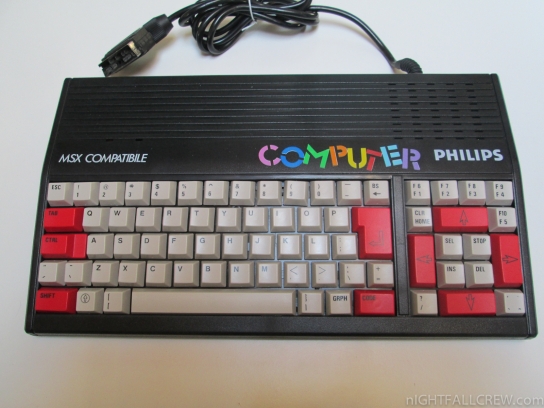
Autopsy:
from Old-Computer Museum:
The NMS-801 was one of the last MSX machine made by Philips. This economical computer was a true MSX machine. The official MSX logo was although replaced on the case by the “MSX Compatible” mark because the MSX standard required a cartridge slot, which the NMS-801 had not.
The NMS-801 was only sold in Italy where it wasn’t very successful because of its poor expansion capabilities. However, Philips used the same case, CPU and video chip to produce the NMS-3000 and 4000, two video terminals dedicated to the Italian Videotel network, a precursor to the Internet which enabled each Italian family to access large databases as well as sending messages to one another.
source: old-computers.com
Commodore 16 Boxed Mint Condition
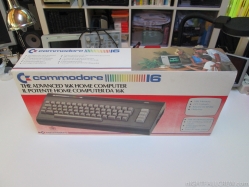
Autopsy:
from Wikipedia:
The Commodore 16 was a home computer made by Commodore with a 6502-compatible 8501 CPU, released in 1984. It was intended to be an entry-level computer to replace the VIC-20 and it often sold for 99 USD. A cost-reduced version, the Commodore 116, was sold only in Europe.
The C16 was intended to compete with other sub-$100 computers from Timex Corporation, Mattel, and Texas Instruments (TI). Timex’s and Mattel’s computers were less expensive than the VIC-20, and although the VIC-20 offered better expandability, a full-travel keyboard, and in some cases more memory, the C16 offered a chance to improve upon those advantages. The TI-99/4A was priced in-between Commodore’s VIC-20 and Commodore 64, and was somewhat between them in capability, but TI was lowering its prices. On paper, the C16 was a closer match for the TI-99/4A than the aging VIC-20.
Commodore president Jack Tramiel feared that one or more Japanese companies would introduce a consumer-oriented computer and undercut everyone’s prices. Although the Japanese would soon dominate the U.S. video game console market, their feared dominance of the home computer field never materialized. Additionally, Timex, Mattel, and TI departed the computer market before the C16 was released.
Outwardly the C16 resembled the VIC-20 and the C64, but with a dark gray case and light gray keys. The keyboard layout differed slightly from the earlier models, adding an escape key and four cursor keys replacing the shifted-key arrangement inherited from the C-64 and VIC. Performance-wise located between the VIC-20 and 64, it had 16 kilobytes of RAM with 12 KB available to its built-in BASIC interpreter, and a new sound and video chipset offering a palette of 128 colors (in reality 121, since the system offered 16 base colors with 8 shades per color, but black always remained black, with all 8 shades), the TED (better than the VIC used in the VIC-20, but lacking the sprite capability of the VIC-II and advanced sound capabilities of the SID, both used in the C64). The ROM resident BASIC 3.5, however, was more powerful than the VIC-20′s and C64′s BASIC 2.0, in that it had commands for sound and bitmapped graphics (320×200 pixels), as well as simple program tracing/debugging.
source: wikipedia
Commodore Plus/4 Boxed
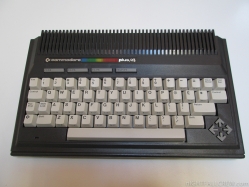
Autopsy:
This is a old article that i forgot to publish.
from Wikipedia:
The Commodore Plus/4 is a home computer released by Commodore International in 1984. The “Plus/4″ name refers to the four-application ROM resident office suite (word processor, spreadsheet, database, and graphing); it was billed as “the productivity computer with software built-in”. It had some success in Europe, though it was a total flop in the United States, where it was derided as the “Minus/60″—a pun on the numerical difference between the Plus/4 and the dominant Commodore 64.
In the early 1980s, Commodore found itself engaged in a price war in the home computer market. Companies like Texas Instruments and Timex Corporation were releasing computers that undercut the price of Commodore’s PET line. Commodore’s MOS Technology division had designed a video chip but could not find any third-party buyers. The VIC-20 resulted from the confluence of these events and it was introduced in 1980 at a list price of $299.95.
Later, spurred by the competition, Commodore was able to reduce the VIC’s street price to $99, and it became the first computer to sell over 1 million units. The Commodore 64, the first 64-kB computer to sell for under 600 US$, was another salvo in the price war but it was far more expensive to make than the VIC-20 because it used discrete chips for video, sound, and I/O. Still, the C-64 went on to become a best-seller and was selling for $199 at the time of the Plus/4′s introduction.
Even while C64 sales were rising, Commodore president Jack Tramiel wanted a new computer line that would use fewer chips and at the same time address some of the user complaints about the VIC and C64.
source: wikipedia
Commodore 128
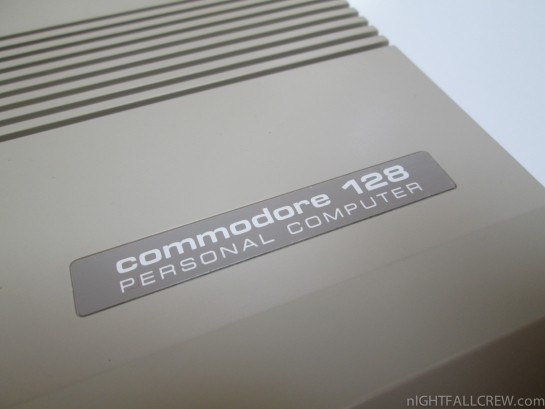
Autopsy:
This is a old article that i forgot to publish.
from Wikipedia:
The Commodore 128 (C128, CBM 128, C=128) home computer was the last 8-bit machine commercially released by Commodore Business Machines (CBM). Introduced in January 1985 at the CES in Las Vegas, it appeared three years after its predecessor, the bestselling Commodore 64.
The C128 was a significantly expanded successor to the C64, with nearly full compatiblity. The new machine had 128 kB of RAM in two 64 kB banks, and an 80-column color video output. It had a redesigned case and keyboard. Also included was a Zilog Z80 CPU which allowed the C128 to run CP/M, as an alternative to the usual Commodore BASIC environment. The presence of the Z80 and the huge CP/M software library it brought, coupled with the C64′s software library, gave the C128 one of the broadest ranges of available software among its competitors.
The primary hardware designer of the C128 was Bil Herd, who had worked on the Plus/4. Other hardware engineers were Dave Haynie and Frank Palaia, while the IC design work was done by Dave DiOrio. The main Commodore system software was developed by Fred Bowen and Terry Ryan, while the CP/M subsystem was developed by Von Ertwine.
The C128′s keyboard included four cursor keys (previous Commodores had two, which required using the shift key to move the cursor up or left. These were retained on the 128, for C64 compatibility), an Alt key, Help key, Esc key, Tab key (not present on prior models) and a numeric keypad. The lack of a numeric keypad, Alt key and Esc key on the C-64 were an issue with some CP/M productivity software when used with the 64′s Z-80 cartridge.
Many of the added keys matched ones present on the IBM PC’s keyboard. While the 128′s 40 column mode closely duplicated that of the C64, an extra 1K of color RAM was made available to the programmer, as it was multiplexed through memory address 1. The 128′s power supply was improved over the 64′s unreliable design, being much larger and equipped with cooling vents and a replaceable fuse. Instead of the single 6510 microprocessor of the C64, the C128 incorporated a two-CPU design. The primary CPU, the 8502, was a slightly improved version of the 6510 capable of being clocked at 2 MHz. The second CPU was a Zilog Z80 which was used to run CP/M software, as well as to initiate operating mode selection at boot time. The two processors could not run concurrently, thus the C128 was not a multiprocessing system.
source: wikipedia
Commodore Music Maker with Software and Documentation Boxed
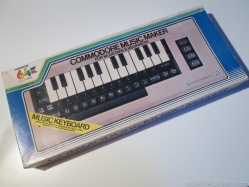
Autopsy:
from Wikipedia:
The Music Maker was a plastic overlay for the Commodore 64 “breadbox” keyboard, which included plastic piano keys corresponding to keys on the keyboard.
source: wikipedia
Aoyue 857A++ SMD Rework Station donated by a Friend
I have made some works for a friend and i didn’t want money, the friend then wanted to contribute to my Electronic Lab with this Hot Air Desoldering Station. Thanks, i appreciate it.
Video demostration:
source: aoyue.com
Seleco Walkie Mod. CD TV – 2A Boxed
New Donation: Commodore VC-1541 to Repair + Klain Tape + Some IC.
Material donated:
- Commodore VC-1541 (need to fix it)
- Microcomputer Data Recorder Klain for Commodore 64/VIC20/PET.
- Some IC.
Thanks Alessio for the donation.
Tatung: A history of a bad luck
About 3 months ago i have repaired my Tatung Einstein with stability problems, after a few minutes the screen was filled with random characters. Below the replacement parts:
- 2 x 74LS157 (IOO6/IOO7) Multiplexer.
On the same day has broken the Tatung TC-01 Monitor, the vertical sync is died without any way of adjustment. Yesterday, instead of celebrating Easter, i have tried to repair the monitor, the faulty component was as follows:
- 1 x TDA 2578A Sync Mixer.
Very happy i have connected the Tatung Einstein to the monitor, i have tried a few games and after 15 minutes the Tatung (computer) decided to die. I spent more hours to understand what could have happened, oh! found it, some ram burned. Below the replacement parts:
- 3 x RAM 4264 (IO11/IO10/IO8)
What could happen again?
I also did the dump of the eprom (rom), the download below.
Epson HX-20 Presentation and Replacing old accumulators (NiCd)
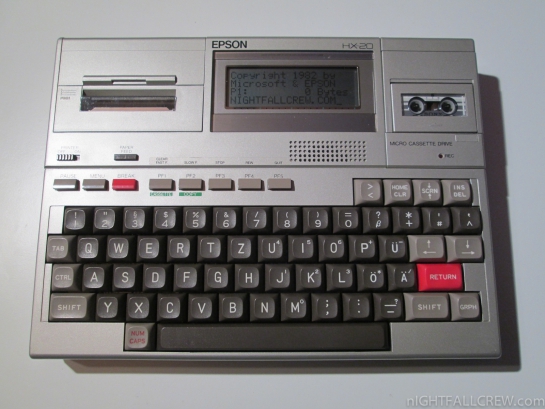
Autopsy:
The latest images of the gallery show how to replace the NiCd accumulators.
from Wikipedia:
The Epson HX-20 (also known as the HC-20) is generally regarded as the first laptop computer, announced in November 1981, although first sold widely in 1983. Hailed by BusinessWeek magazine as the “fourth revolution in personal computing”, it is generally considered both the first notebook and handheld computer.
With about the footprint of an A4 size page, the Epson HX-20 features a full-transit keyboard, rechargeable nickel-cadmium batteries, a built-in 120 × 32-pixel LCD (smaller than that on many mobile phones today) which allowed 4 lines of 20 characters, a calculator-size dot-matrix printer, the EPSON BASIC programming language, two Hitachi 6301 CPUs at 614 kHz which is essentially a souped up Motorola 6801, 16 kB RAM expandable to 32 kB, two RS-232 ports at a maximum of 4800 bits/s for the first 8-pin DIN connector intended for modem or serial printer with the second port capable of 38400 bits/s using a 5-pin DIN connector which was mainly for use with external floppy drive and video display an early concept of docking station, a 300 bit/s acoustic coupler was available, built-in microcassette drive, barcode reader connector.
Uses a proprietary operating system, which consists of the EPSON BASIC interpreter and a system monitor program, and weighs approximately 1.6 kg. Known colours of the machine are silver and cream, while some prototypes were dark grey. The HX-20 was supplied with a grey or brown carry case. An external acoustic coupler, the CX-20, was available for the HX-20, as was an external floppy disk drive, the TF-20, and an external speech synthesis Augmentative Communication Device (ACD), ‘RealVoice’. Another extension was the serially connected 40 x 24 character video. It used a special protocol, EPSP, which was also used by the external floppy disk drive.
The battery life of the HX-20 was approximately 50 hours running BASIC and less using the microcassette, printer or RS-232. The data integrity could be preserved in the 4.0 – 6.0 V range. The power supply was rated for 8 W. Operating and charging it would tolerate 5 – 35 °C. Data integrity could be preserved at -5 – 40 °C. The HX-20 could be stored between -20 – 60 °C. The later, more popular TRS-80 Model 100 line, designed by Kyocera, owed much to the design of the HX-20.
Loading game bomber:
source: wikipedia collection of HX-20 programs































































































































Recent Comments